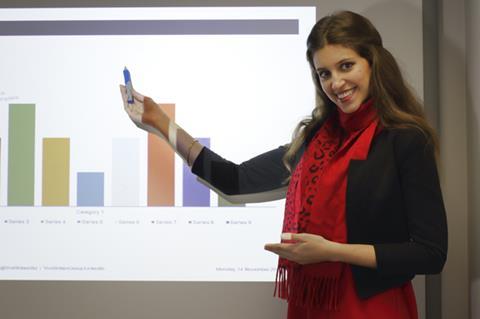In the first of a CPD series, Ian Jerrum, MD of Searchlight Insurance Training, explains how to create a perfect PowerPoint presentation

Mention the word PowerPoint and hearts sink. Love it or loathe it, however, ppt is the go-to tool for business presentations and something most of us use from time to time. So how can you make a perfect PowerPoint presentation that works for you? Follow these basic rules and you won’t go far wrong.
1. Firstly, invest time in planning. Before you even touch ppt, you’ll need a clear idea of who you’re talking to, what you’re aiming to communicate, and where, when, and how you’ll be presenting. A mind map is a good way to organise your thoughts. From there you can ‘storyboard’ your ppt slides.
2. Less is more with ppt shows. Use words your audience will ‘get’. Avoid inappropriately technical language or jargon. And check your spelling, unless you wan’t to squander credibility. The K.I.S.S. principle (Keep It Simple, Stupid) very much applies. No more than 20 words per slide. Strip out everything that doesn’t absolutely need to be there
3. Keep the look consistent and uncluttered. White space is good. Use colour sparingly. Dark-on-light text usually works best. Use no more than two (preferably san serif) typefaces and make sure everything’s legible from the back of the room.
FIND THE LATEST INSURANCE VACANCIES HERE
4. A slick swish from slide to slide is fine, but avoid lots of distracting animations and transitions. A picture really can paint a thousand words (but steer clear of clichés and clip art). Brief video and audio clips can help segment and enliven your presentation. Humour is also good (but don’t try too hard)
5. Rehearse thoroughly. You should always know what’s coming next. Never simply read slides out. Never turn your back. Your slides are not the presentation, they simply illustrate and reinforce what you’re saying. Don’t aim to make your slides your handout.
6. Check your equipment. New batteries in wireless peripherals. Check your cables, pointers, extensions and power supply. Then get out there and communicate! Talk slowly, clearly and audibly, while maintaining eye contact.
That’s it, in a nutshell.





































No comments yet